The prevention of injury is a benefit often gained through massage. A variety of injuries such a muscle strains, pulls and tears can occur for a range of reasons. The most common causes of injury include overuse, muscle weakness and muscle tightness. Depending on the severity, an injury can prevent a person from participating in normal daily activities, increasing stress and anxiety levels. Our massage therapists at Physio.co.uk prevent injury through massage to help maintain healthy muscles, reduce fatigue and improve performance.
What are the most appropriate types of massage to prevent injury?
There are a range of massage types that can help prevent injury. The most common types of massage used to prevent injury include:
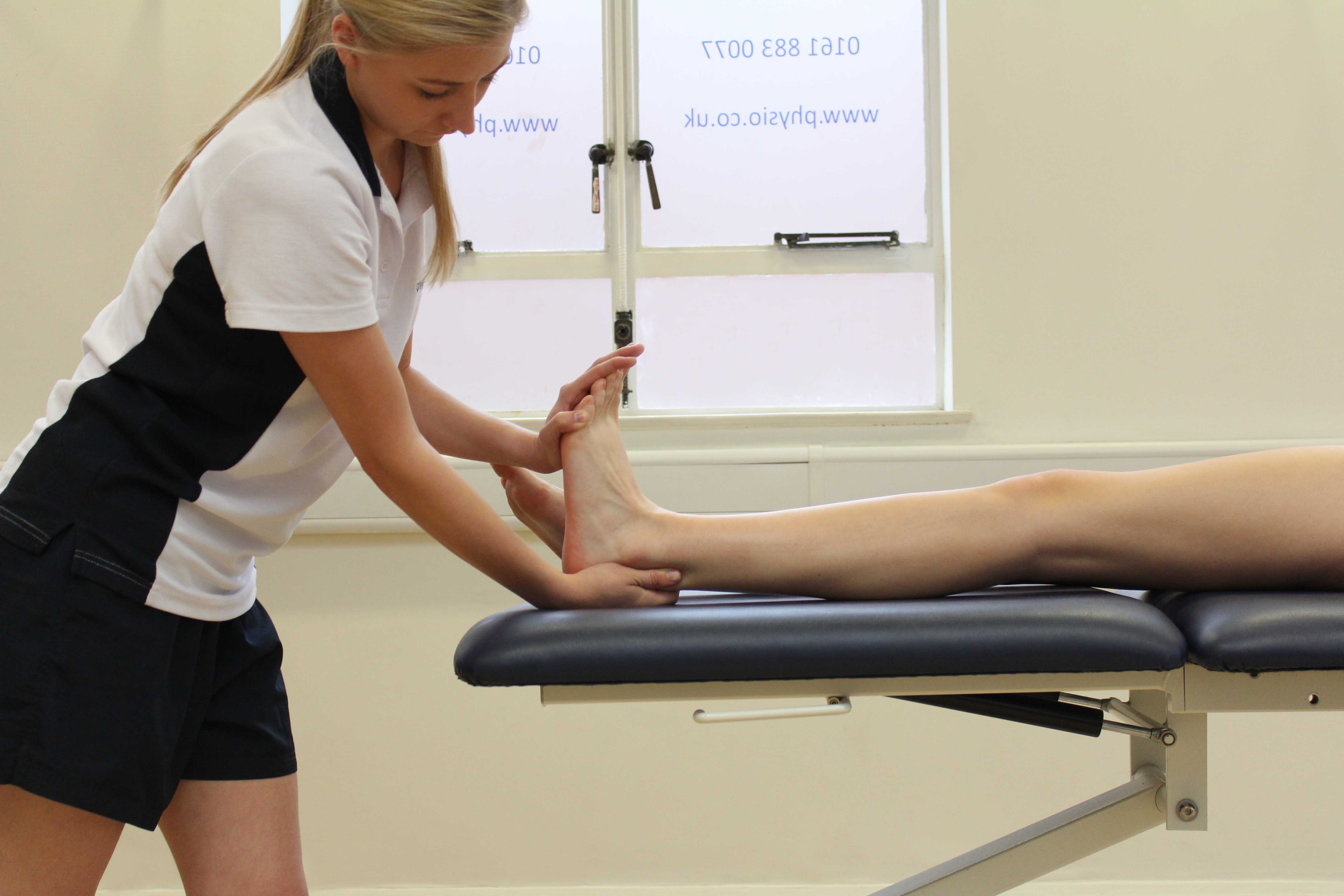 Above: Massage therapy may help identify areas of weakness to help prevent injury.
Above: Massage therapy may help identify areas of weakness to help prevent injury.The massage types most commonly used to prevent injury include deep tissue massage, sports massage and remedial massage.
A deep tissue massage is used to prevent injury. A deep tissue massage involves using a variety of pressure on areas containing soft tissues. Pressure can vary depending on personal preference within a range of different techniques. A deep tissue massage helps to prevent injury by breaking down adhesions and increasing range of movement. Adhesions are small bundles of collagen fibres that restrict movement and increase muscle tightness and pain. When movement is restricted, short bursts of movements during activity are more likely to cause damage to a muscle. A deep tissue massage increases temperature of collagen fibres, making it easier for them to be broken down. Breaking down adhesions increases range of movement and decreases tightness to help prevent injury.
A sports massage is regularly used for injury prevention. A sports massage uses a range of techniques to create an intense style massage. Varied pressure is used throughout a sports massage depending on personal preference and the type of condition that needs treating. Blood flow in increased during a sports massage to help increase healing and recovery. An increase in blood flow also provides more oxygen and nutrients for muscles to use in order to maintain their health. Maintaining a muscles health helps to prevent injury as the muscles are less likely to weaken and fatigue.
A remedial massage is often used to prevent injury. A remedial massage helps to improve muscle condition. Manipulation of muscular tissues occurs during a remedial massage, aiming to stretch, relax and loosen muscles. A remedial massage helps to repair damaged muscle fibres and tissues to improve their condition. By improving a muscles condition, it is less likely to damage during activity or exercise therefore preventing injury.
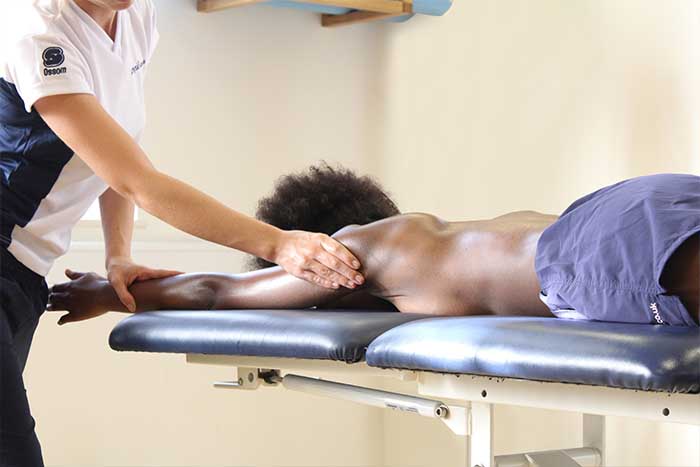
What techniques are used to prevent injury?
A range of techniques can be used to prevent injury. The techniques most commonly used to prevent injury include:
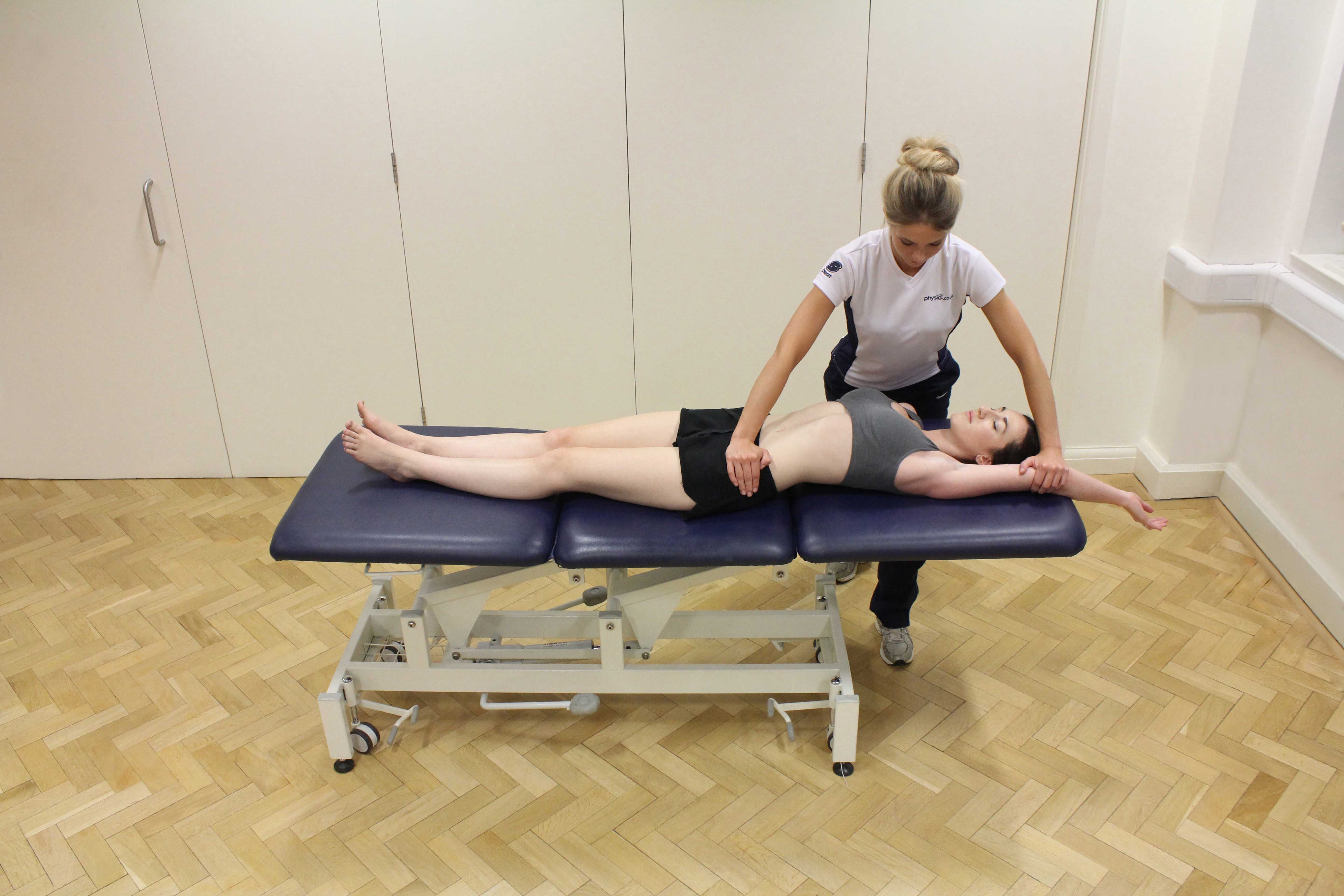 Above: Massage can help imporve flexibility which will help reduce the likelihood of injury occuring
Above: Massage can help imporve flexibility which will help reduce the likelihood of injury occuringThe most common techniques used to prevent injury include kneading, myofascial release and skin rolling.
Kneading is an effective technique used to prevent injury. Kneading is where soft tissues are slowly pulled and squeezed. Kneading aims to stretch and loosen tight and tense muscles as well as increase cellular exchange. Blood and lymph flow are both increased during the pulling and squeezing actions of kneading. Increasing blood flow increases muscle temperature to help them loosen and stretch. Loosened and stretched muscles reduce restriction and increases range of movement. Increasing lymph flow as well as blood flow improves cellular exchange resulting in less waste products and toxins within the muscles and more healthy oxygen and nutrients needed to keep muscles strong and healthy. Increasing range of movement and healthy oxygen and nutrients contribute towards the prevention of injury.
Myofascial release can help to prevent injury. Myofascial release is where a firm pressure is slowly applied to the treatment area. As pressure is slowly applied, temperature of fascia, a layer of tough connective tissues beneath the skin, increases. An increase in temperature allows the therapist to get deeper within the layers of fascia to then spread it out. Fascia can often become tight and restrictive, decreasing range of movement. A decrease in range of movement can make performance poor and a person more likely to injure. Spreading out tight, restrictive fascia increases flexibility and elasticity of the treatment area. An increase in flexibility and elasticity increases range of movement and prevents injury during an event.
Injury can be prevented using skin rolling. Skin rolling involves the picking up of soft tissues and rolling between the fingers and thumbs. Skin rolling aims to relieve both muscle and fascia in order to improvement movement, reduce restriction and decrease tension. A build-up of tension can result in muscular knots that further restrict movement and increase pain. Relieving tension through skin rolling helps to prevent muscular knots to therefore increase movement and reduce restriction. A reduction in restriction prevents injury.
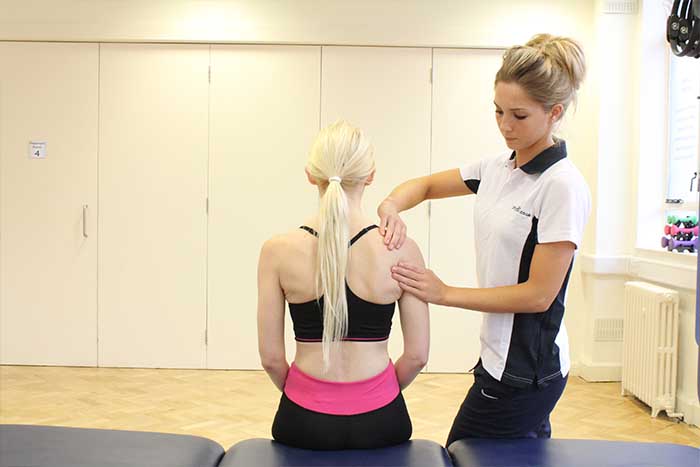
When can a massage help to prevent injury?
A massage can help to prevent injury in a range of situations. The most common situations injury prevention through massage can help include:
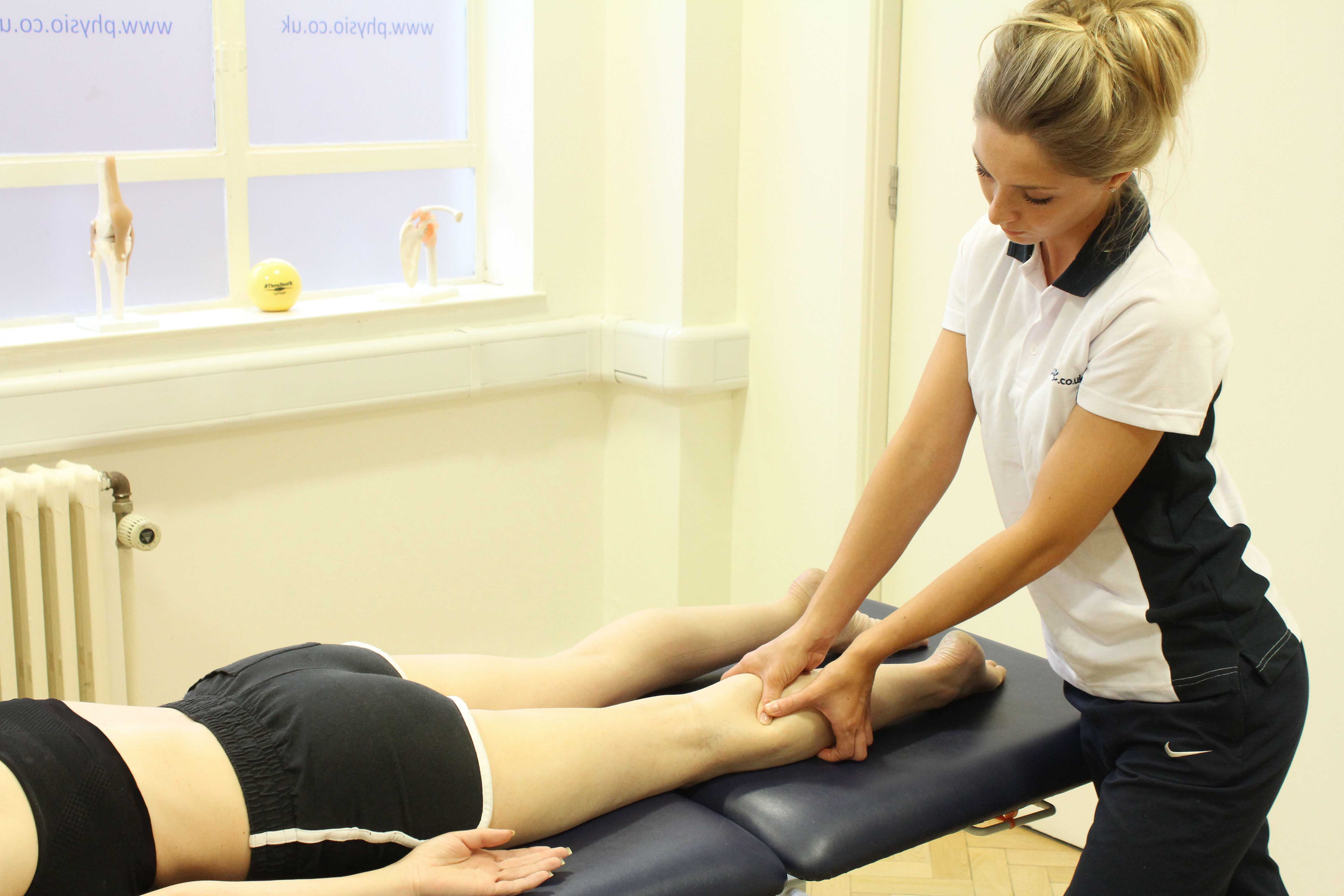 Above: Massage can help identify any muscle imbalances or areas of wekaness to reduce the chance of injury occuring
Above: Massage can help identify any muscle imbalances or areas of wekaness to reduce the chance of injury occuringPreventing injury through massage can help as part of a training programme, post event and pre event.
Injury prevention can help as part of a training programme. A training programme can be used to help a person prepare to participate in an event. The intensity of training programmes can often be high, increasing the work load put onto muscles. A massage helps to strengthen muscles and keep them healthy whilst being put under the intense pressure from the training programme. If an injury occurs, this could prevent a person from participating in both the training and the event. An increase in healthy oxygen and nutrients occurs during a massage. Oxygen and nutrients help to maintain healthy muscles as well as strengthen and repair damage. Increased levels of oxygen and nutrients help to prevent injury during a training programme.
Preventing injury through massage can help post event. After an event has occurred, a build-up of wastes products and toxins often occurs within the muscles. A build-up of oxygen and nutrients can cause delayed onset muscle soreness, muscle fatigue and muscle weakness. Delayed onset muscle soreness and muscle fatigue and weakness can all make injuries such as muscle strains more likely to occur when the person returns to training. A massage helps to remove the waste products and toxins more efficiently after the event to help reduce the chances of delayed onset muscle soreness and muscle fatigue and weakness occurring. The removal of waste products can therefore prevent injury.
Prevention of injury can help a person pre event. Before an event, a person is likely to have muscle tightness and a build-up of tension within muscles due to training. Muscle tightness and tension restrict movement and make injury more likely to follow short bursts of movement. A massage aims to relieve muscle tightness and tension to help increase range of movement and reduce restrictiveness. An increase in range of movement prevents injury from occurring during the event.
What are the physiological effects of massage to prevent injury?
Various physiological effects occur during a massage to help prevent injury. The most common physiological effects that occur include:
The physiological effects that most commonly occur during a massage to prevent injury include the removal of waste products, increased oxygenation and increased tissue elasticity.
The removal of waste products can help prevent injury. Metabolic wastes such as lactic acid can build-up within muscles during or after activity. Metabolic wastes fatigue muscles and increase pain. Muscle fatigue increases muscle weakness, making injury more likely. During a massage, the lymphatic system is stimulated. The lymphatic system is responsible for the removal of metabolic wastes within the body. Stimulation of the lymphatic system increases the rate that metabolic wastes are removed, decreasing muscle fatigue and reducing weakness. A reducing in fatigue and weakness contribute towards preventing injury.
Increased oxygenation is a physiological effect that can help prevent injury. Increased oxygenation involves increasing blood flow to muscles and other cells within the body to supply them with an increase in oxygen. Oxygen is used as an energy source and for cellular exchange within muscles. A lack of oxygen causes muscle fatigue and weakness making injuries such as strains and tears more likely to occur during an event. An improvement in blood flow occurs during a massage. An improved blood flow increases the amount of oxygen available for muscles to use during an event. Increasing oxygen energises muscles as well as keeping them strong and healthy therefore preventing injury.
Injury can be prevented when tissue elasticity increases. Tissue elasticity is the ability of elastin fibres within muscles to allow a muscle to stretch to its full length. When tissue elasticity is poor, muscles become restrictive making muscle pulls and strains more likely to occur during activity. Friction is created during a massage between the skin and fingers. Friction encourages an increase in blood flow to the treatment area. An increase in temperature of muscle tissues reduces tissue inelasticity. A reduction in tissue inelasticity reduces restriction and increase range of movement. Increasing range of movement prevents injuries such as pulls and strains from occurring.
Summary
Injury prevention involves reducing muscle tightness in tension in order to allow full range of movement without restriction. Various massage types including deep tissue massage, sports massage and remedial massage can be used to prevent injury. A variety of techniques can be used throughout a massage to prevent injury including kneading, myofascial release and skin rolling. Preventing injury through massage can help as part of a training programme, post event and pre event. A range of physiological effects such as the removal of waste products, increased oxygenation and increased tissue elasticity occur during a massage to help prevent injury. Our massage therapists at Physio.co.uk prevent injury through massage to help improve performance and increase range of movement.
How can I arrange a massage to prevent injury?
The easiest way to arrange a massage to prevent injury at Physio.co.uk is to email us at office@physio.co.uk or call us on 0800 033 7800.
You can also book an appointment online and save £10

 0330 088 7800
0330 088 7800


































